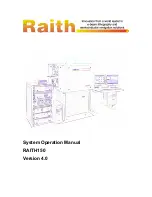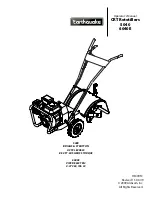
8
4. This part of the system must always be used in such a manner as to prevent the rope
from becoming slack when being in the vicinity of areas where there is a potential risk of
falling. Only adjust the length of the lanyard when the user is not moving towards an area
where there is a risk of falling.
5. In order to prevent falling and subsequent swinging, the working area and the lateral
movement from the central axis to both sides must be limited to a maximum of 1.50 m.
6. If this lanyard with integrated stretch-type shock absorber is used with a class C anchor
device in accordance with EN 795, the deflection of the horizontal flexible anchorage line
is also to be taken into account when calculating the required height below the user.
7.
Note:
When falling over an edge, there is a risk of injury as the person falling may
bounce against other parts or components of the building.
8. For the event of a fall over an edge and subsequent swinging movement, special rescue
measures must be laid down and exercised.
Individual components used
Webbing of the lanyard:
Polyester (PES)
Twisted ropes:
Polyamide (PA)
Kernmantle ropes:
Polyester (PES)
Sewing thread
Polyester (PES)
Karabiners:
Optionally galvanised steel, aluminium or
stainless steel
Stretch-type shock absorber:
Polyester/Polyamide (PES/PA)
These instructions for use consist of part 1 (product description), part 2 (general part) and the
associated record card (inspection log).
An inspection log (record card) is enclosed with these instructions for use. This inspection log
must be filled out with the required information by the user before first use.
Testing institute and production control:
Fachbereich
“
Persönliche Schutzausrüstung
”
Zentrum für Sicherheitstechnik,
Zwengenberger Strasse 68,
42781 Haan, ID number: 0299
Furthermore, the safety karabiners must be checked for proper locking. The entire lanyard
must neither be cracked nor frayed nor damaged. Even if the protective cover of the stretch-
type shock absorber is damaged, this part of the system must be replaced.
Clearance below the user
The necessary clearance below the user is calculated as follows:
BFD
type:
Maximum
length
Clearance below the user when using one anchorage point
at the height of the rear
D-ring
at the height of the footing
(feet)
FlexBelt
2 m
4.75 m
6.75 m
3
2 m
4.75 m
6.75 m
4
2 m
4.75 m
6.75 m
5
2 m
4.75 m
6.75 m
6
2 m
4.75 m
6.75 m
The lanyard with integrated stretch-type shock absorber of the XXL type has been tested and
approved for a total weight of up to 136 kg.
Depending on the total weight and the position of the anchorage point, the necessary
clearance is calculated as follows:
BFD
type:
Maximum
length
Total weight
in kg
Clearance below the user when using one
anchorage point
at the height of the
rear D-ring
at the height of the footing
(feet)
XXL
2 m
100
4.75 m
6.75 m
XXL
2 m
136
5.75 m
7.75 m
Notes on horizontal use:
These lanyards with integrated stretch-type shock absorber have also been successfully
tested for horizontal use and a resulting fall over an edge. A burr-free steel edge with a
radius of r = 0.5 mm was used. This test demonstrated that the equipment is suitable for
being pulled over similar edges, e.g., rolled steel sections, wooden beams or clad, rounded
parapets.
Irrespective of this test, the following instructions must be observed in the event of horizontal
or inclined use where there is a risk of falling over an edge:
1. If a risk assessment carried out before starting work reveals that the edge is especially
“
cutting
”
and/or is
“
not free from burrs
”
(e.g., unclad parapet, trapezoidal sheet or sharp
concrete edge), the following measures must be observed:
•
before starting work, appropriate steps must be taken to prevent falling over the
edge, or
•
some form of edge protection must be installed before starting work, or
•
the manufacturer must be contacted.
2. The lanyard has been tested over an edge with an angle of 90 degrees. The user should
be aware of the increased risks that exist when it is possible to fall over an edge with an
angle of less than 90 degrees (measured between the two legs of the lanyard, for
example, when the anchorage point is below the feet of the user, or in case of a roof
rising at an oblique angle) and that additional precautionary measures or additional tests
might be required.
3. The
necessary clearance
below the edge is:
➢
for all types: with a total weight of 100 kg
at least 5.25 m
➢
for the XXL type: with a total weight of 136 kg
at least 6.25 m
BFD 3-5-6 FlexBelt XXL.indd 8
16.05.19 11:39
Содержание BFD 3
Страница 87: ......









































